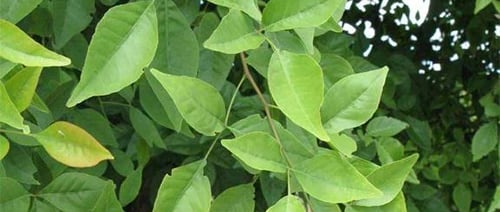Koovalam
holy tree with trifoliate leaves and sweet, aromatic fruit.
6/25/20251 min read


Bilva tree is called wood apple tree and its botanical name is Aegle marmelos.
Bilva tree (Koovalam in Malayalam) has been held sacred for many millennia by Hindus and offerings made to Shiva are incomplete without Bilva leaves.
As per our puranas, the bilva or bael tree grew from a spot where the sweat of Goddess Parvati fell on the Mandrachal mountain, which existed in the east of mount Meru.
People who can see auras can see that the bilva tree has a strong aura, probably due to nano mercury in its leaves. These leaves have a very pleasant aroma, and water sprinkled on the leaves shine.
The leaves emit positive energy and absorbs negative energy. Try keeping some fresh bilva leaves at your work place desk, if there is a foul vindictive atmosphere there. Bilva leaves have the ability to absorb positive scalar energy emitted by the Shiva Lingam.
The trifoliate leaves (tripatra) represents the three eyes of Lord Shiva OR Shiva's trishul which represents the trinity of Dvaita Hindusim mediator / destroyer. creator/
The coconut with three eyes is also offered to Lord Shiva. Only the middle eye can be pierces the the two are hard. In places where Hindus have NO access to tropical tree coconuts, bilva leaves are used instead.
Goddess Lakshmi, wife of Lord Vishnu hold a fruit of Koovalam in her right hand.
The 6000 year old Ayurveda uses every part of this tree for amazing cures and prevention.
The bilva tree is resistant to any harsh condition thrown at it.
The bilva tree is usually found next to Shiva temples. Hindu puranas Shiva Purana, Padma Purana, Skanda Purana, Devi Bhagavatha Purana etc details the procedures and protocol involving the bilva (bael) tree.
Koovalam wood with a resinous gum is used as yupam in various sacred yagnas like the athirathram.
Yupam is NOT a sacrificial post to tether sacrificial animals as tom tommed by the white invader and their fake mutts.
Koovalam
Souparnika Green Herb Oil
EPR Ayurvedhic
Kuruvilasseri , Valiyaparambu
Thrissur , Kerala - 680732
Contact
eprayurvedics@gmail.com
+91 7356774405 | +91 9048627017
EPR ayurvedhic © 2025. All rights reserved.
Our IT Partner | Nibhas IT Solutions
